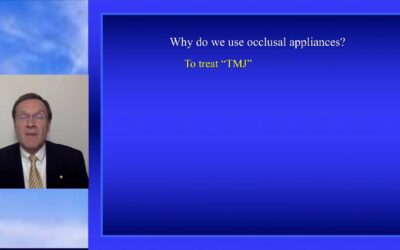Duration: 59 minutes, 50 seconds
Author: Dr. Sascha A. Jovanovic
Vertical Ridge Augmentation Using Alveolar Distraction Osteogenesis (DO)
Introduction
In this article, we will explore the fascinating topic of vertical ridge augmentation using the technique of alveolar distraction osteogenesis. This specialized procedure focuses on reconstructing bone vertically, providing a solution for patients with insufficient bone height for dental implants. We will also delve into the two main procedures for vertical bone augmentation, namely vertical guided bone regeneration (GBR) and horizontal bone augmentation using non-resorbable membranes.
Vertical Bone Augmentation: An Overview
Vertical bone augmentation is a critical aspect of dental implantology, as it allows for the successful placement of dental implants in patients with inadequate bone height. The technique of alveolar distraction osteogenesis has revolutionized this field, offering a unique approach to vertical bone reconstruction.
Distraction Osteogenesis: An Orthopedic Origins
The technique of distraction osteogenesis has its roots in orthopedic surgery, where it was initially developed for lengthening limbs. This groundbreaking method involves the gradual separation of bone segments and the generation of new bone tissue in the gap created.
Adaptation in Oral and Implant Dentistry
Recognizing the potential of distraction osteogenesis in dental procedures, it has been successfully adapted for use in oral and implant dentistry. This technique allows for vertical and sometimes horizontal alveolar distraction, effectively addressing bone deficiencies for dental implant placement.
Vertical GBR: A Key Procedure
Vertical guided bone regeneration (GBR) is one of the primary techniques employed in vertical bone augmentation. It involves the use of resorbable or non-resorbable membranes to support bone regeneration and control the direction of bone growth.
The Importance of Membranes
Membranes play a crucial role in vertical GBR procedures, as they prevent the ingrowth of soft tissue into the defect site. Non-resorbable membranes provide long-term stability and help maintain the space necessary for bone regeneration, ensuring the success of the vertical bone augmentation procedure.
Procedure Steps
Vertical GBR typically involves the following steps:
- Evaluation of the bone defect
- Elevation of a mucoperiosteal flap
- Preparation of the defect site
- Placement of the membrane
- Suturing of the flap
- Post-operative care and follow-up
Horizontal Bone Augmentation with Non-Resorbable Membranes
While vertical GBR is an effective method for vertical bone augmentation, horizontal bone deficiencies may require a different approach. In such cases, non-resorbable membranes can be employed to augment the bone horizontally.
The Role of Non-Resorbable Membranes
Non-resorbable membranes provide stability and space maintenance in horizontal bone augmentation procedures. They act as a barrier, preventing soft tissue infiltration and ensuring undisturbed bone regeneration.
Procedure Steps
The steps involved in horizontal bone augmentation with non-resorbable membranes are as follows:
- Evaluation of the bone defect
- Elevation of a mucoperiosteal flap
- Preparation of the defect site
- Placement of the non-resorbable membrane
- Suturing of the flap
- Post-operative care and follow-up
Conclusion
Vertical ridge augmentation using alveolar distraction osteogenesis is a highly specialized technique that allows for the reconstruction of bone vertically. By utilizing vertical GBR and horizontal bone augmentation with non-resorbable membranes, dental professionals can successfully address bone deficiencies and provide a solid foundation for dental implants.
FAQs
1. How long does the bone regeneration process take?
The time required for bone regeneration varies depending on the individual patient and the extent of the bone defect. Generally, it can take several months for the new bone tissue to fully mature.
2. Is vertical ridge augmentation a painful procedure?
Pain and discomfort associated with vertical ridge augmentation can be managed with appropriate pain medication prescribed by the dentist. Local anesthesia is also administered during the procedure to minimize any potential discomfort.
3. Are there any risks or complications associated with vertical bone augmentation?
As with any surgical procedure, there are potential risks and complications involved, including infection, inadequate bone regeneration, and soft tissue complications. However, these risks can be minimized with proper patient selection and meticulous surgical technique.
4. How long does the healing process take after vertical bone augmentation?
The healing process following vertical bone augmentation can vary from patient to patient. It typically takes a few weeks for the soft tissues to heal, and several months for the regenerated bone to fully integrate.
5. Can vertical ridge augmentation be performed on any patient with bone deficiencies?
Vertical ridge augmentation may not be suitable for all patients with bone deficiencies. A thorough evaluation by a qualified dental professional is necessary to determine the feasibility and suitability of the procedure based on the individual’s specific condition and requirements.





Add comment